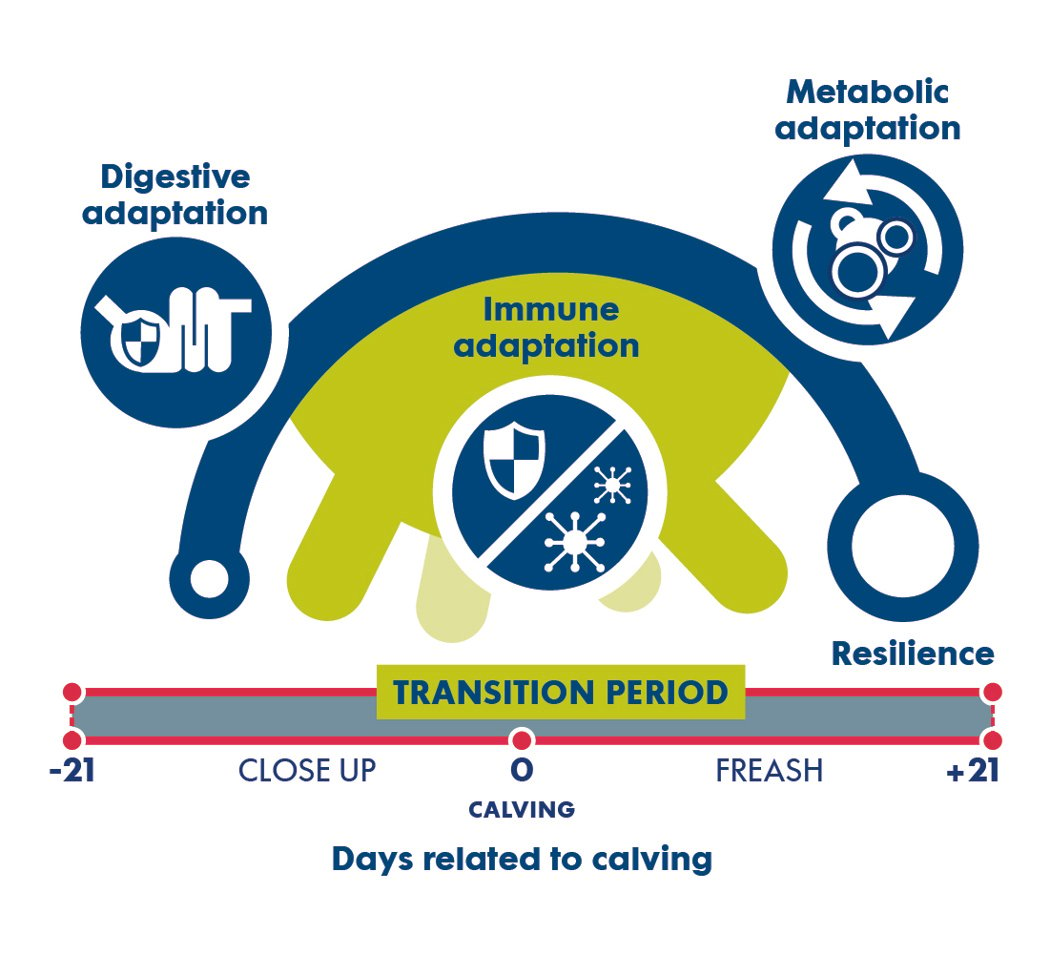3 Physiological Adaptations for a Successful Transition
The challenges faced by dairy cows are enormous during the transition period, as the nutrient requirement for lactation increases substantially and the metabolic needs of the mammary gland take priority at this time. In the transition period, the cow must undergo three fundamental physiological adaptations: immune, digestive, and metabolic adaptations, which are closely interrelated and dependent on one another.

Metabolic Adaption
During transition, the demand for nutrients and energy by the mammary gland increases. When the cow fails to adapt, several metabolic disorders occur, significantly affecting the immune system, reproductive performance, udder health, and animal welfare. There are multiple scenarios which may disrupt the success of the process such as reduced voluntary dry matter intake, dietary imbalance, or poor management of calving-related stress. When these scenarios occur, the cow may fail to adapt, activate the immune system, or even trigger systemic inflammation.
Digestive Adaption
The quick transition to a high-energy diet after calving can affect the transit and digestion of nutrients through the gastrointestinal tract. If we do not allow enough time for the cow to adapt to her new diet, it can lead to subclinical ruminal acidosis.
By promoting intestinal health in transitioning cows, the immune system will be less stimulated, the cows will have more energy for milk production and an easier time reproducing. How can you promote digestive adaptation and intestinal health on the farm? By optimizing dry matter intake and avoiding dietary restrictions. It is also important to minimize sources of stress such as thermal and psychological stress around calving.
Immune Adaption
Metabolic and digestive adaptations influence the immune system. Strategies which reduce the intensity and duration of this immune activation will improve the allocation of energy towards milk production. The cow's ability to maintain calcium balance is an important objective.
These three key adaptations will influence the resilience of your cows during the transition period and lead to improved milk production and greater longevity.
Measuring your cow’s body condition score is key! See our interactive tool online! click here